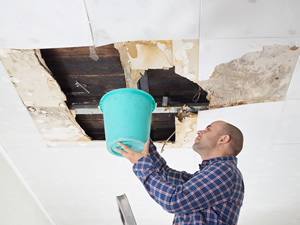Roofing Damage Repair: When is a New Roof Necessary?
 Your roof protects your family for many years. Rainstorms, hot days and every weather event in-between is no match for the roof’s tight construction. However, damages do occur over time. Every structure is unique along with its damage type. As a homeowner, you want to weigh the benefits of either repairing or replacing the roof based on the damage’s extent. Learn more about roofing damage repair as you contemplate a service or installation in the future.
Your roof protects your family for many years. Rainstorms, hot days and every weather event in-between is no match for the roof’s tight construction. However, damages do occur over time. Every structure is unique along with its damage type. As a homeowner, you want to weigh the benefits of either repairing or replacing the roof based on the damage’s extent. Learn more about roofing damage repair as you contemplate a service or installation in the future.
Isolated Hail Damage
Small hail doesn’t make a dent in your rooftop, but larger pieces create problems. Shingles might have cracks or divots on their surfaces. If your roof has an isolated section that’s damaged, a quality repair is possible. Certified roofing repair contractors can remove specific sections and replace them with new shingles.
There’s no need to replace the entire roof unless the hail damage covers more than 50 percent of the surface. Spot repairs, in this case, would eventually turn into a complete overhaul.
Curled Shingles
If your roof has 3-tab shingles, these flaps lay flat against the structure. They should remain in this position for the life of the materials. Because of driving rain and wind updrafts, these flaps might curl over time. Shingles that end up with a permanent curl at their edges must be replaced. Moisture enters under the curled sections, which damages the roof’s wood sheathing below.
Widespread curling is a rare occurrence. You’ll typically have isolated areas that only require roofing damage repair. Replacing the entire roof isn’t part of this scenario.
Missing Materials
Some roofs suffer from outright damage, including peeled layers from the structure. Missing shingles expose underlayment that can be severely damaged if left open to the weathering elements. For small sections, certified roofing repair contractors fix the issue at little cost.
Widespread damages that reveal a large portion of the roof may require an entire installation. Adding up the materials and labor to repair that large section can be close to an installation’s quote. Work with the contractor to really understand the damage’s extent.
Sagging Sections
In most cases, a new roof is necessary when you have sagging sections. The roofing materials may appear to be in good shape, but there’s a defect among the layers. Wood sheathing that supports the materials is the area that typically sags. The materials allow some moisture into the wood, which leads to rot and declining wood. Roofers must replace the sheathing and add new roofing layers to rectify the sagging conditions.
Mystery Leaks Require Roofing Damage Repair
Look around your attic. The ceiling may have yellowing or damp spots on its surface. Leaks occurred in these areas. They must be evaluated as soon as possible. Experienced roofers examine the structure from inside the attic and walking the exterior surface. They replace any materials that are allowing leaks into the home. Repairs are the only services necessary in these cases.
Flashing Damage
Metal sections or flashing surround certain items on the rooftop, such as chimneys and other penetrations. The flashing creates a barrier to moisture where the penetration meets the shingles. If your flashing appears bent, rusted or otherwise damaged, it must be replaced. The metal is the only component requiring replacement. The shingles are often in perfect shape after the repair.
Certified roofing repair contractors deal with every detail involved in your project. Experienced roofers, such as Vintage Reconstruction, offer several options during a roofing damage repair estimate. By working with the professionals, you make an educated decision about your property. Repaired and replaced roofs stand for many years after the fact.
